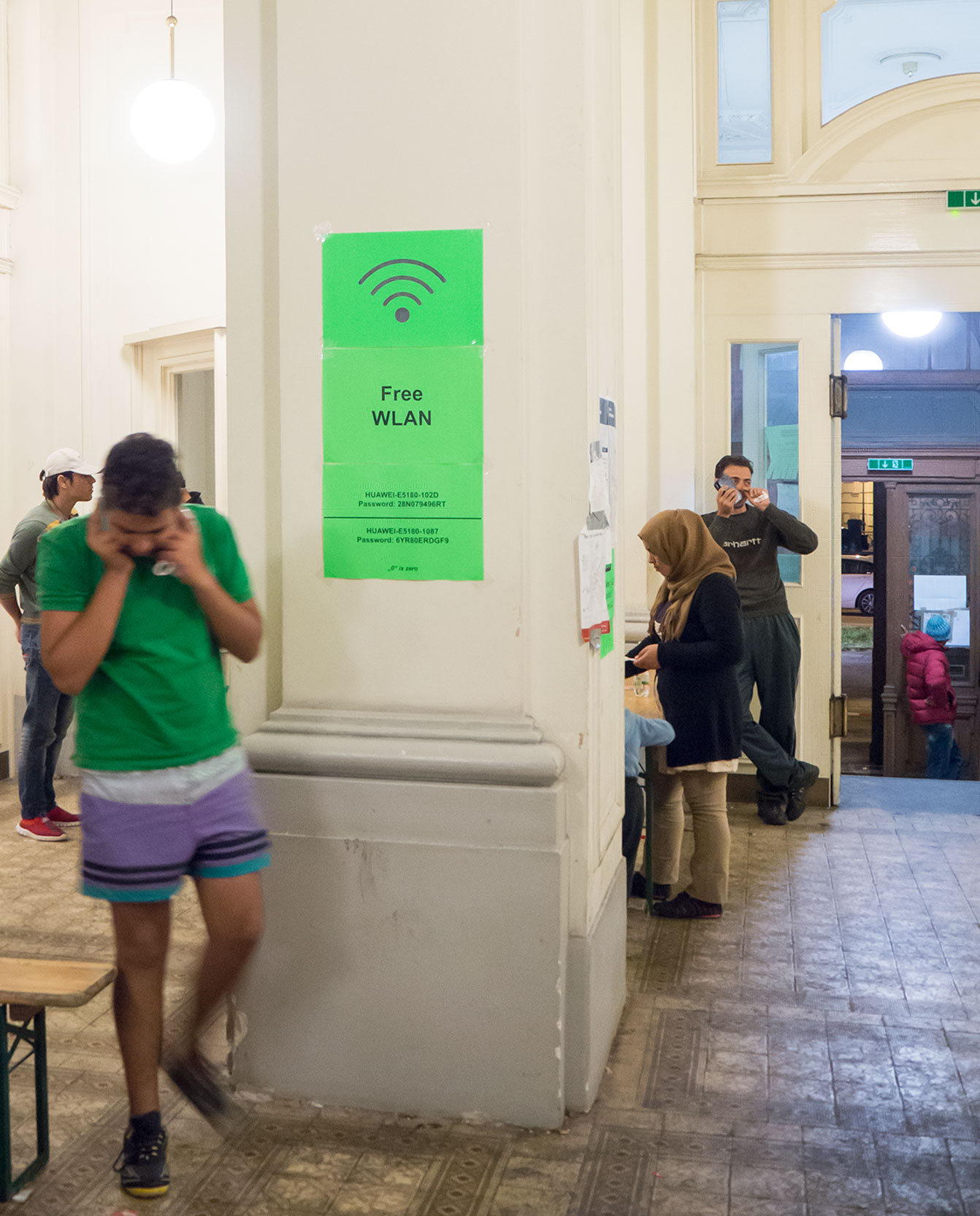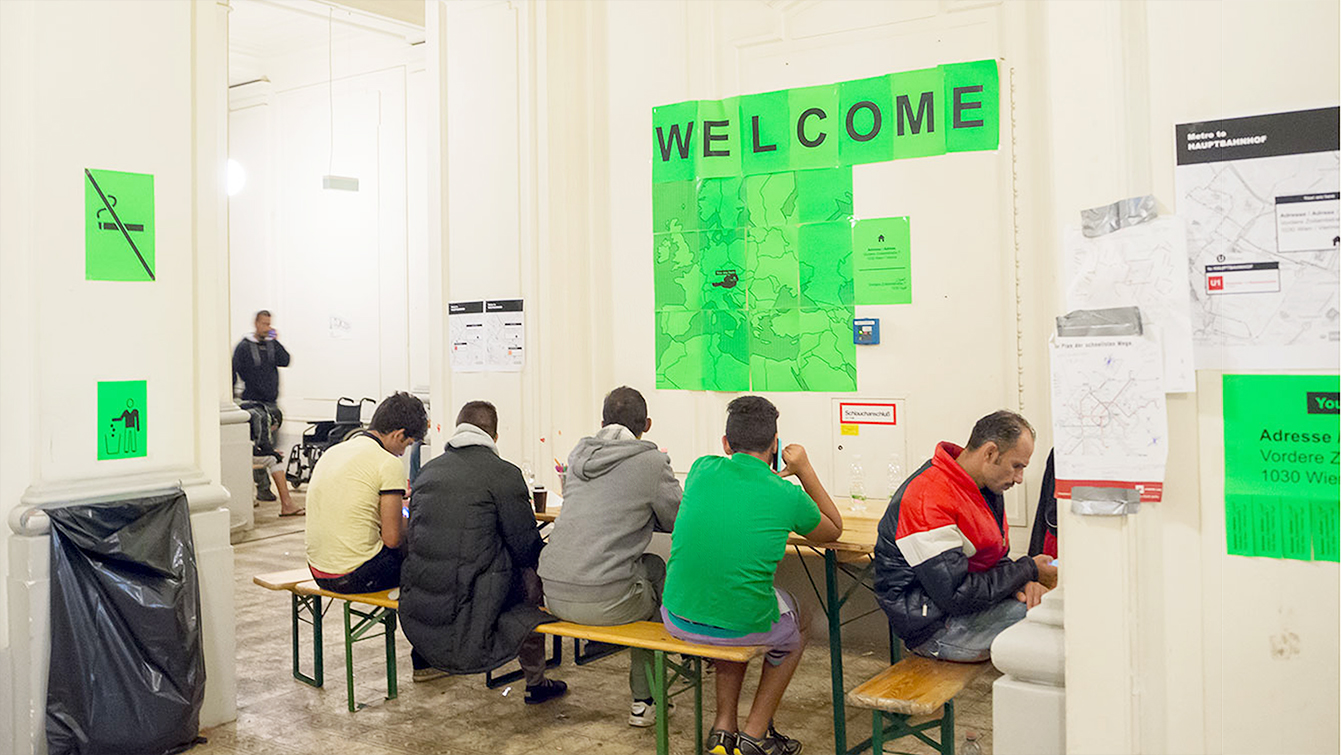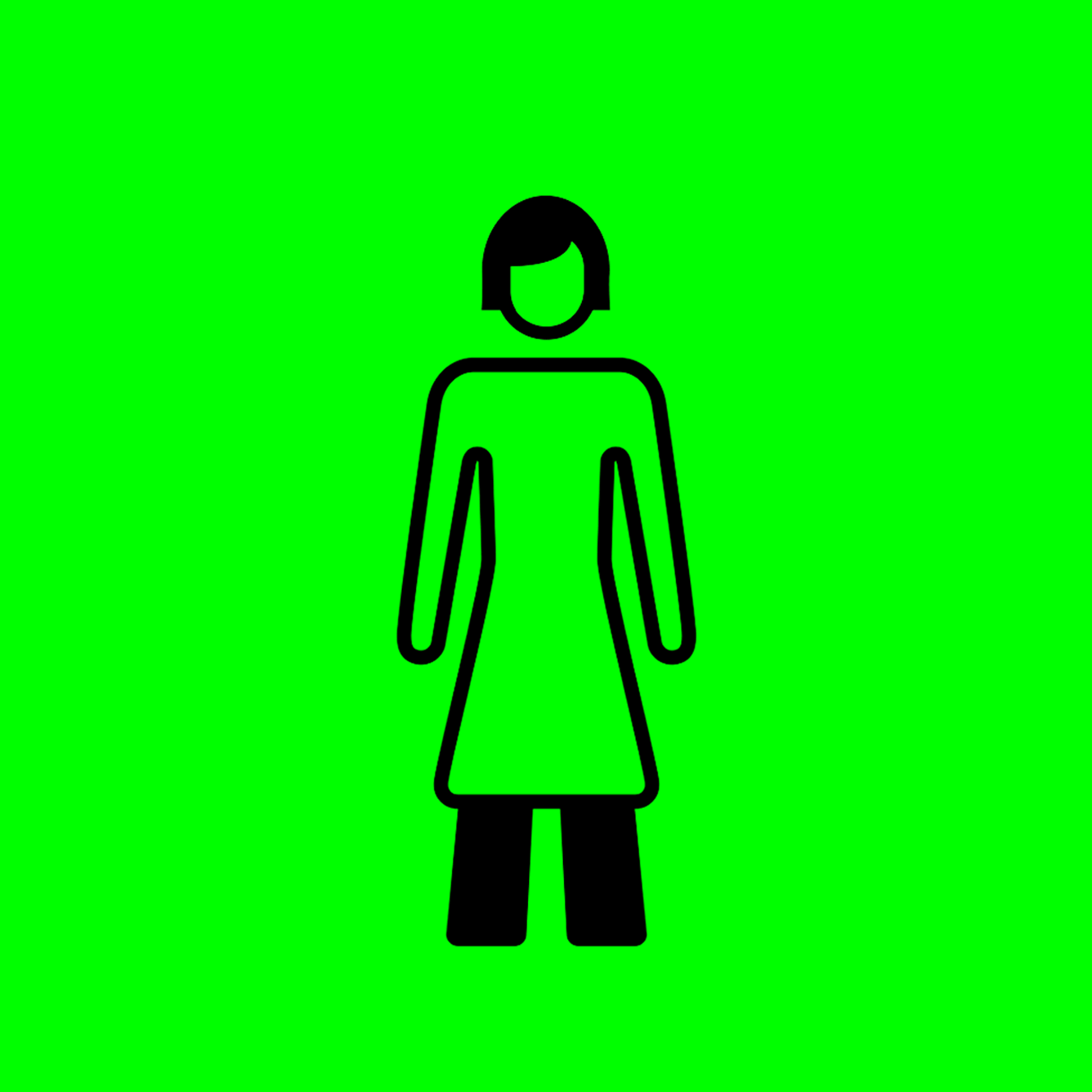Loading …
First Aid Kit
Information Design
How can designers show respect to refugees? By providing clear and quick information in situations where they need help the most is one way to go. Coming to places of shelter, they often have the same questions regarding safety, stay and medical help. The information needs to be easily understandable, this is where good design comes into place.
Facing the so-calles refugee crisis in 2015, we realized as designers we could actually help by designing a communication signage based on pictograms. Shortly after, the language-independent, icon-based information system FIRST AID KIT was installed in various shelters. It supports the communication process between refugees and NGOs, bringing structure to these often chaotic places.


Refugees all have the same urgent questions: Where am I? Am I safe? Where can I get medical help? Where can I eat, sleep? Many varying notes on doors and walls tried to give answers to these questions, in different languages, and often even misleading guidance: like that water is not potable in Vienna. The opposite of course is the case, as the city has one of the best urban drinking waters. The information chaos didn’t help the refugees at all. The helpers were more engaged in providing additional information and translating, instead of helping.




Easy Reproduction
Our icon system can be easily printed and hung up. How helpful it actually is can be seen by its usage: the Red Cross applied it in all their Viennese centers. Feedback helps making the system better over time.
Hijab – yes or no?
The system labels infrastructure, communicates dos & don’ts and also considers ethnical differences. E.g. the sign for women: headscarf – yes or no?! We designed an icon that serves to all religious beliefs – the head can be perceived as hairstyle yet at the same time as a headscarf.
Icons for medical first help
Soon we discovered that also pictos for medical help were desperately needed. Although the diagnosis of course needs communication, pictures of the most common symptoms can help the dialogue betweens doctors and patients. The pictograms help with a faster diagnosis by showing the areas where patients experience pain.

Prototypical designs consulting the Red Cross show us that pictorial signs are urgently needed in the communication between doctors and patients.
Open Source
Our information system lives through feedback and is constantly being adapted. That’s why it is important to us, who uses this free open source set and where it is being used. We are grateful for critique, especially regarding understandability. We evaluate, adapt, advance our set and provide constant updates.
→ Download
First Aid Kit von buero bauer ist lizenziert unter einer Creative Commons Namensnennung – Nicht-kommerziell – Weitergabe unter gleichen Bedingungen 4.0 International Lizenz
